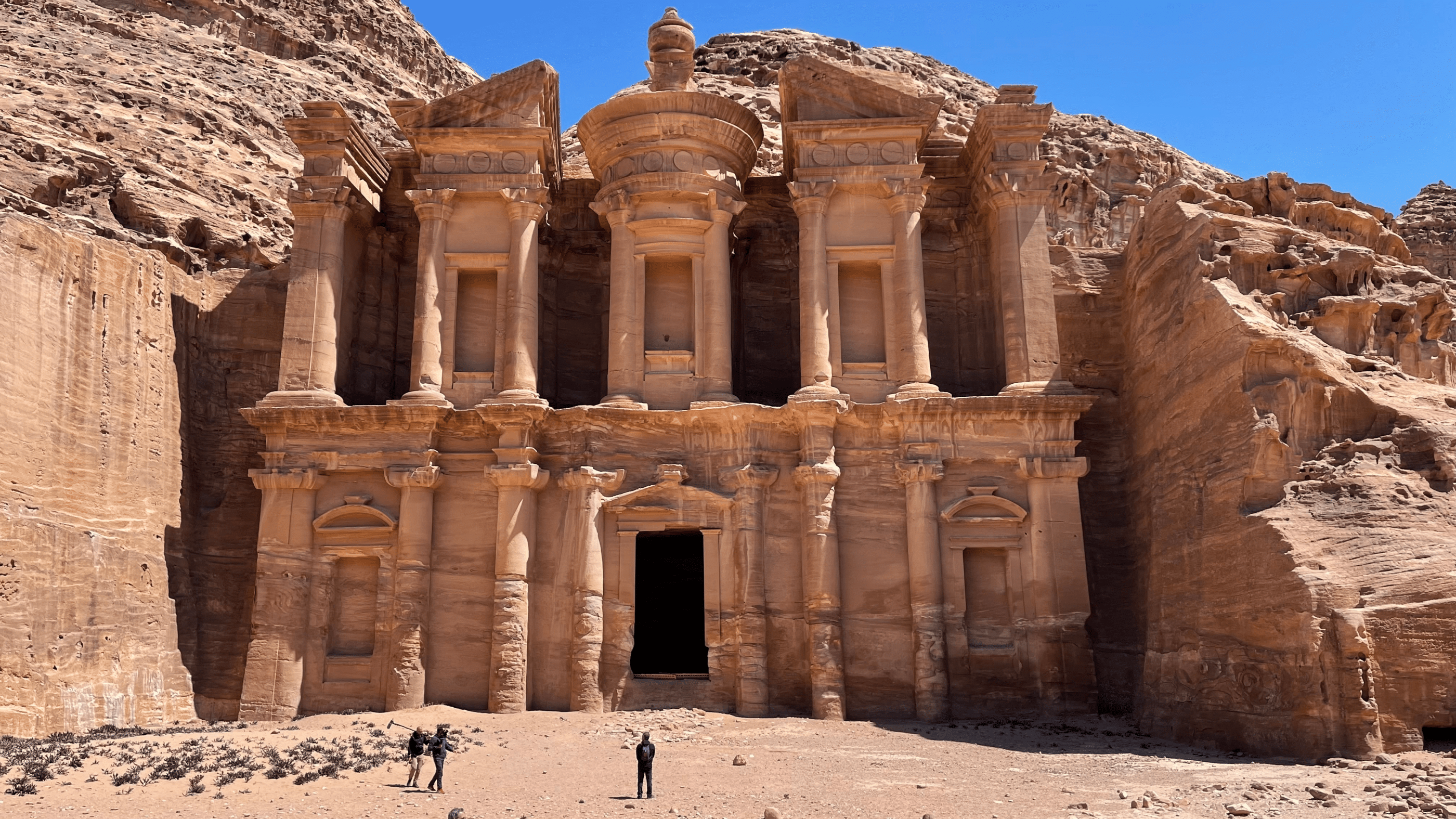Who were the Nabataeans?
by Alaa Ababneh, PhD Candidate at Universidad Autónoma de Barcelona
Tucked between the deserts of Arabia and the mountains of the southern Levant, the Nabataeans were an ancient Arab people who built a thriving kingdom and trade empire that spanned centuries. Best known today for their rock-carved capital Petra (now a UNESCO World Heritage Site) the Nabateans flourished from the 4th century BCE to the 2nd century CE.
At their peak, the Nabataeans controlled a vast trade network that connected the Arabian Peninsula to the Mediterranean world. They became masters of commerce, facilitating the flow of luxury goods such as spices, incense, and textiles across the deserts. Their control of these trade routes, especially the lucrative spice trade, brought immense wealth and influence.
The Nabataeans’ success was not only built on trade – it was rooted in their mastery of the desert landscape. Living in some of the harshest environments on Earth, they developed sophisticated water collection and conservation techniques, including waterproof cisterns and strategically placed reservoirs. These innovations allowed the Nabataeans to build cities and supply vast caravans crossing the arid landscape.
The Nabataean Kingdom, established in the 4th century BCE, spanned what is now modern-day Jordan and extended into parts of present-day Saudi Arabia, Syria, and Israel. While they wrote primarily in Aramaic, they likely spoke early forms of Arabic as well. Despite external pressures, the Nabataeans maintained their independence for centuries. Greco-Roman writers described them as fiercely self-reliant and resistant to conquest.
By the late 1st century BCE, the Nabataeans had established a network of caravan stations that served as trade hubs and community centers. These stops functioned as banks, temples, bathhouses, and even camel-breeding centers. The Nabataeans also had a military system, with camps and watchtowers along key routes, to protect their caravans from bandits.
The Middle Nabataean Period (30 BCE – 70 CE) marked the height of their power, with major administrative centers in Hegra, Tayma, and Leuce Kome. The kingdom’s wealth was visible in their elaborately painted pottery, impressive tombs, and temples that dotted the desert landscape.
In 106 CE, the Nabataean Kingdom was annexed by Emperor Trajan and absorbed into the Roman Empire. Though their political autonomy ended, their cultural legacy endured. In the centuries that followed, many Nabataeans converted to Christianity, and their traditions were gradually woven into the broader fabric of Greco-Roman society.
Today, the legacy of the Nabataeans lives on in the dramatic façades of Petra and their enduring influence on architecture, engineering, and desert living. Long overlooked in the grand narrative of antiquity, they are now recognized as one of the ancient world’s most ingenious and resilient civilizations.
For Further Information:
- Al Masri, Dalya. (2023). “Saudi Arabia Unveils Face of Ancient Nabataean Woman.” CNN. https://www.cnn.com/style/article/saudi-arabia-nabataean-woman-archeological-discovery/index.html
- Doubek, James. (2024). “Archaeologists Discover 12 Skeletons at a Buried Tomb in Petra, Jordan.” NPR. https://www.npr.org/2024/10/15/nx-s1-5153719/petra-jordan-tomb-discovery-treasury
-
Retsö, Jan. (1999) “Nabataean Origins – Once Again.” Proceedings of the Seminar for Arabian Studies, 29, 115–18. http://www.jstor.org/stable/41223529
This content is brought to you by The American Institute for Roman Culture, a 501(C)3 US Non-Profit Organization.
Please support our mission to aid learning and understanding of ancient Rome through free-to-access content by donating today.
Cite This Page
Cite this page as: Alaa Ababneh, The American Institute for Roman Culture, “Who were the Nabataeans?” Ancient Rome Live. Last modified 4/6/2025. https://ancientromelive.org/nabataeans/
License
Created by The American Institute of Roman Culture, published on 4/6/2025 under the following license: Creative Commons: Attribution-NonCommercial-ShareAlike. This license lets others remix, tweak, and build upon this content non-commercially, as long as they credit the author and license their new creations under the identical terms. Please note that content linked from this page may have different licensing terms.



